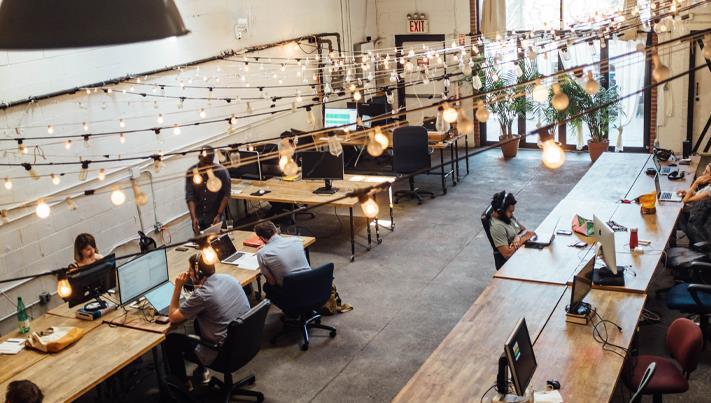So What To Do?
Despite the pros and cons of open workplaces, people do not always have an opportunity to choose. So if you find yourself in an open office, here are some tips on how to make it work for you.
Dedicated Days
When working with a team, not all collaborations are productive. Sometimes people go from meeting to meeting without enough time to do the work. Harvard Business Review writes about a study that surveyed 182 senior managers in a range of industries: 65% said meetings keep them from completing their own work, 64% said meetings come at the expense of deep thinking.
The solution is dedicated days. Pick at least one day a week when there will be no meetings at all. This way, you and your team can reach a deep focus on the most important tasks without distraction of meetings.
Dedicated Places
Similar to dedicated days, dedicated places allow you to concentrate on one task at a time. For example, having booths for phone calls, rooms for meetings, or a kitchen for chit-chats is a great solution. These boundaries contribute to an efficiently running open office.
Check Availability
Even though you can reach your colleague within a few steps, it doesn’t mean you should do it right away. Sometimes people are concentrated on their tasks, and even work-related questions can distract them from what they were doing. The Muse recommends to take advantage of customizable technology and set up messages to let colleagues know when they are unavailable.
Keep It Clean
This tip might be not so obvious, but it’s an important one. Balys Kriksciunas, from Hostinger, explains: “When you’re trying to concentrate, and there is a mess on your desk, it will repeatedly distract your attention away from work. You might notice notes from previous or upcoming tasks, and they will drag you from a current one. The same goes for the tables around you.” So to help you and those around you, keep your workplace tidy.
When Sick, Go Home
In an open office, people can clearly see when you are not there. It might be one of the reasons why people are taking fewer sick days. Office for National Statistics highlights that back in 1993, average employee once spent 7.2 days a year at home due to illness. They took just 4.1 days off in 2017.
And this is just a wrong thing to do. When feeling sick, leave the office. And when you see someone else who is obviously unhealthy, encourage them to go home as well.
On the bright side, open offices can encourage your professional and friendly relationships, and create a united team without the fear of leaders. But it can also be distracting, stressful, and risky for your health.
But since the International Facility Management Association states that nowadays, around 70 percent of offices have some form of an open concept, sometimes, you just need to adapt to it. These tips can help you to do exactly that.











